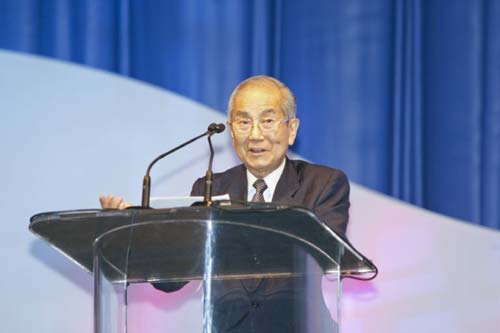What we can learn from LinkedIn founder Reid Hoffman: an insider’s view
Celebrated bestselling author Malcolm Gladwell tells us that 10,000 hours is the average amount of time you need to dedicate to a skill to become an expert. Well, Ben Casnocha has spent 10,000 hours working alongside LindedIn co-founder Reid Hoffman and has recently written a long essay about what he has learned along the way. You can find this essay on his blog, and it’s well worth the read.
In this essay he describes and illustrates 16 lessons that he has learned during the ten thousand hours spent working with Mr Hoffman. If you have the time reading this essay certainly offers a good return on the investment of your time. However, Casnocha also distills his most important learnings into two big super-important lessons. We thought we’d share these with you.
1. Decision making
Casnocha says that the primary lesson he learned from Hoffman is that of timely and effective decision making. Hoffman uses a valuable decision making process that helps him to make wise decisions without suffering from excess deliberation. Nor does it suffer from poor decisions made in haste. Put simply, he will make a an instinctive decision based on his feeling from the currently available information. Then he will mentally make a note of what new information he would require for him to change his mind. This way he is actively working to overcome the confirmation bias with which all humans are afflicted.
Normally we make a decision and then consciously or subconsciously select information that supports this view. Hoffman’s approach is the opposite. The benefits that come from this approach are even greater for smaller companies for whom the ability to be nimble is a key advantage over their larger rivals. This idea explains in part why small, disruptive firms have had such an impact in recent years.
2. Simplicity
The second lesson Casnocha learned is to apply simplicity to complex business problems. Attempting to cut through complexity is not the same as ignoring the messiness of reality. But in a group decision-making environment it’s important not to get bogged down by an almost infinite array of potential actions. One way to apply simplicity is to work out the level of difficulty which a potential action has. Hoffman might designate the various options with various degrees of difficulty or cost in terms of time or money. Then they’ll discuss how important the objective is and choose an option that best matches this.
There are other ways in which Hoffman attempts to simplify complex decisions. For example, when there are range of pros and cons for committing to a particular policy, Hoffman says that unless there is one over-riding reason which alone would be sufficient to pursue the course of action then don’t go ahead with it. As Nassim Taleb, author of The Black Swan says if you’re coming up with blended reasons for doing something then you’re probably just trying to convince yourself. When appraoching a decison, try to simplify the framework of the decision without losing key nuances of the issue.
We hope you’ve enjoyed this Eloquens post. Let us know what you thought of it through Twitter









Leave a Reply
Want to join the discussion?Feel free to contribute!